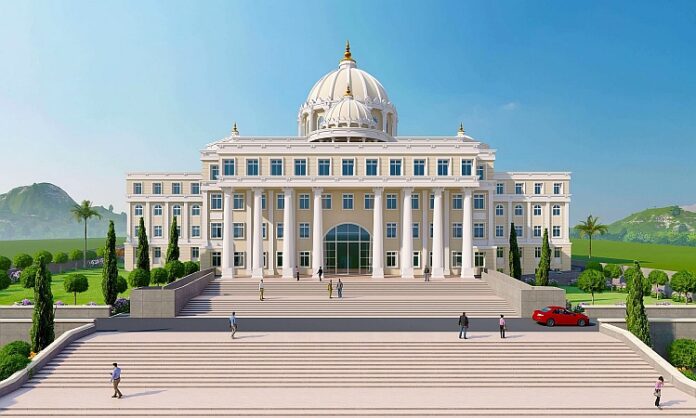Chikkaballapura (K’taka): Prime Minister Narendra Modi on inaugurated Sri Madhusudan Sai Institute of Medical Sciences and Research (SMSIMSR) at Chikkaballapur. The institute will provide medical education and quality medical care-completely free of cost-to all. It will start functioning in the academic year 2023.
Addressing the gathering, Modi noted that Chikballapur is the birthplace of one of the architects of modern India, Sir M M Visvesvaraya, and expressed gratitude for getting the opportunity to pay tribute to his samadhi and visit his museum. “I bow my head before this virtuous land”, the Prime Minister remarked. He emphasized that it was the land of Chikballapur that was the source of inspiration for Sir Visvesvaraya to come up with new innovations and develop new engineering projects for the farmers and the general populace.
Also Read: NCISM launches Smart mission to boost research in Ayurveda
The Prime Minister called Satya Sai Gram a wonderful model of service. He lauded the mission being undertaken by the institution through education and health initiatives. He said that today’s inauguration of the medical college has further strengthened this mission.
Established with the vision to de-commercialise medical education by Sri Sathya Sai University for Human Excellence at Sathya Sai Grama, Muddenahalli, Chikkaballapur. SMSIMSR is located in a rural area and aims to provide medical education and quality medical care without any fee.
Also Read: Construction starts on 2 more medical colleges & hospitals in Bihar
The institute, to be run under the norms stipulated by the National Medical Commission (NMC), will comprise of one academic block and two teaching hospitals, and offer free of cost quality medical care to all, irrespective of caste, creed, religion, and financial status.
Currently, one academic block – Sri Sathya Sai Rajeswari memorial block, and one teaching hospital – Sri Sathya Sai Sarla Memorial Hospital have begun functioning round the clock as the first phase of the medical education mission of Sadguru Sri Madhusudan Sai. Soon a 400-bedded teaching hospital will be erected within the campus limits.
Vision of the institute
“Right to Education’ is the fundamental right of every child and citizen of this nation. Unfortunately, most children are bereaved of the right kind of education, especially the rural population. Pursuing medical education is a far-fetched dream for the rural due to the impeding factors of affordability and accessibility,” said a senior officer of the institute.
Also Read: Purnia medical college to start MBBS course, govt sanctions posts
This medical college shall nurture medical doctors with noble values, who shall dedicate themselves to serve the underserved, particularly in rural India, with a sense of gratitude and readiness to sacrifice. It will ensure that every deserving candidate will be able to pursue medical education and thus will help in reducing the brain drain in the nation, the institute stated.
Why the free medical education?
Around ten lakh students appear every year for NEET examinations to pursue MBBS country-wide whereas only 90,000 seats are available. Only 10% of total applicants qualify for NEET. This scenario is poorer and bleak when it comes to the availability of such highly demanded courses to students hailing from marginalised rural backgrounds as a result of intensive commercialisation. It becomes next to impossible for rural students to have access due to the affordability crisis and also the language barrier.
Also Read: Jharkhand Govt mulls medical city with 10 hi-tech hospitals
This scenario is poorer and bleak when it comes to the availability of such highly demanded courses to students hailing from marginalised rural backgrounds as a result of intensive commercialisation. It becomes next to impossible for rural students to have access due to the affordability crisis and also the language barrier.
When education is imparted free of any costs, the beneficiaries out of immense gratitude will try their best to offer it back to societal welfare. The deserving candidates will receive their rightful position to learn and contribute thereafter. Only rural students will return back to their villages and serve the pockets of the population residing in the villages which are in deep need of quality healthcare.




